“One day after this tasting at the huge WOSA event at Waterloo Bridge, I tasted a range of Cap Classique, many of them in the £40-50 range but this accomplished NV example is just at good, at a fraction of the price (£13.92 duty paid),” writes Keay about the Imvula wine.
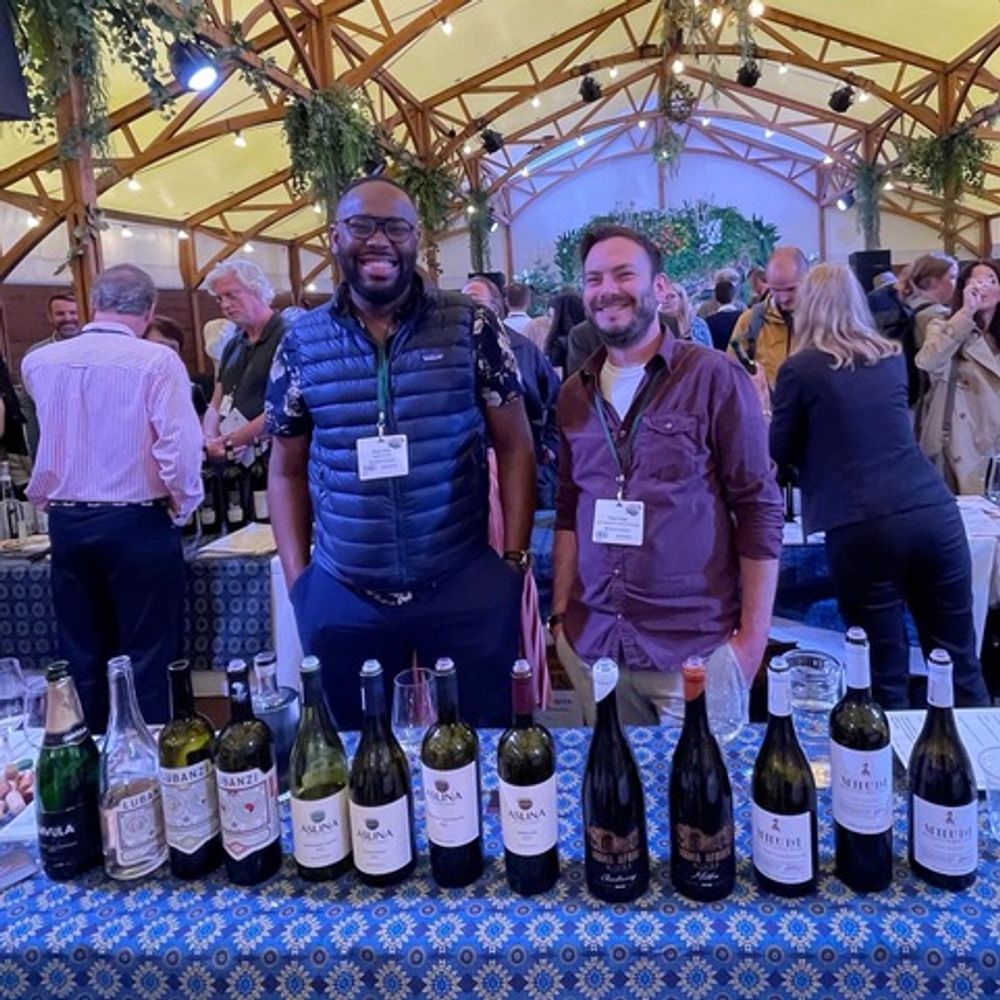
MJ Wine Cellars team: Mags Janjo and Drew Slowe (l-r)
August 1 saw the new tax regime on wine coming into force, with drinkers hit by the biggest single hike in duty since 1975 – 44p added to the price of a typical bottle (or 98p for stronger wines such as Amarone, Primitivo, Napa Cabernet or Barossa Shiraz, with ABVs of 15% or more). Most people in the trade – already squeezed by the ravages wrought to the industry by Brexit, recession and inflation – have thrown up their hands at this latest misstep by a government long past its sell-by date, which has refused to listen to industry criticism of the changes.
But just how do specialist wine importers negotiate this unpromising landscape?
At its trade tasting in early July MJ Wine Cellars – alongside South Africa specialists RAKQ and Australia-focused The Wine Importers – gave me some insight, in part because of its strategy but also through the wines in its portfolio.
Sales director Mags Janjo who set up MJ Wine Cellars just before the pandemic struck, admits the current environment is tough.
“Logistics are an absolute nightmare; costs have doubled, paperwork trebled. We used to get wines across from France within a few days, now it can take a month – and the distance hasn’t changed, of course. And paperwork for Brexit, which didn’t exist before, now costs £115 per palette, plus all the work and stress,” he says.
Janjo manages to offset some transportation costs with RAKQ and The Wine Importers by sharing containers whenever possible, particularly significant with shipments from South Africa, almost completely the focus of RAKQ’s business but also an important chunk of MJ Cellars’ portfolio.
“We’re all around 3-5 years old and are the new kids on the block in this industry so it makes sense to support each other whenever that’s possible,” he argues.
Something that has been even more crucial is having two sides to the business – off and on-trade – which are kept carefully apart but whose symbiosis has basically kept the business afloat, with the bread and butter off-trade side allowing the more eclectic and ambitious on-trade one to grow and flourish.
“We’ve been very lucky to work with the likes of the Wine Society, Majestic and Waitrose, particularly during lockdown but also since. We do an Australian blend for a leading supermarket and a Syrah for the Wine Society as well as importing ex-cellar and selling to our off-trade partners. It’s very practical and important but remains a completely separate side to the business – palate and quality are at a very different level,” he says.
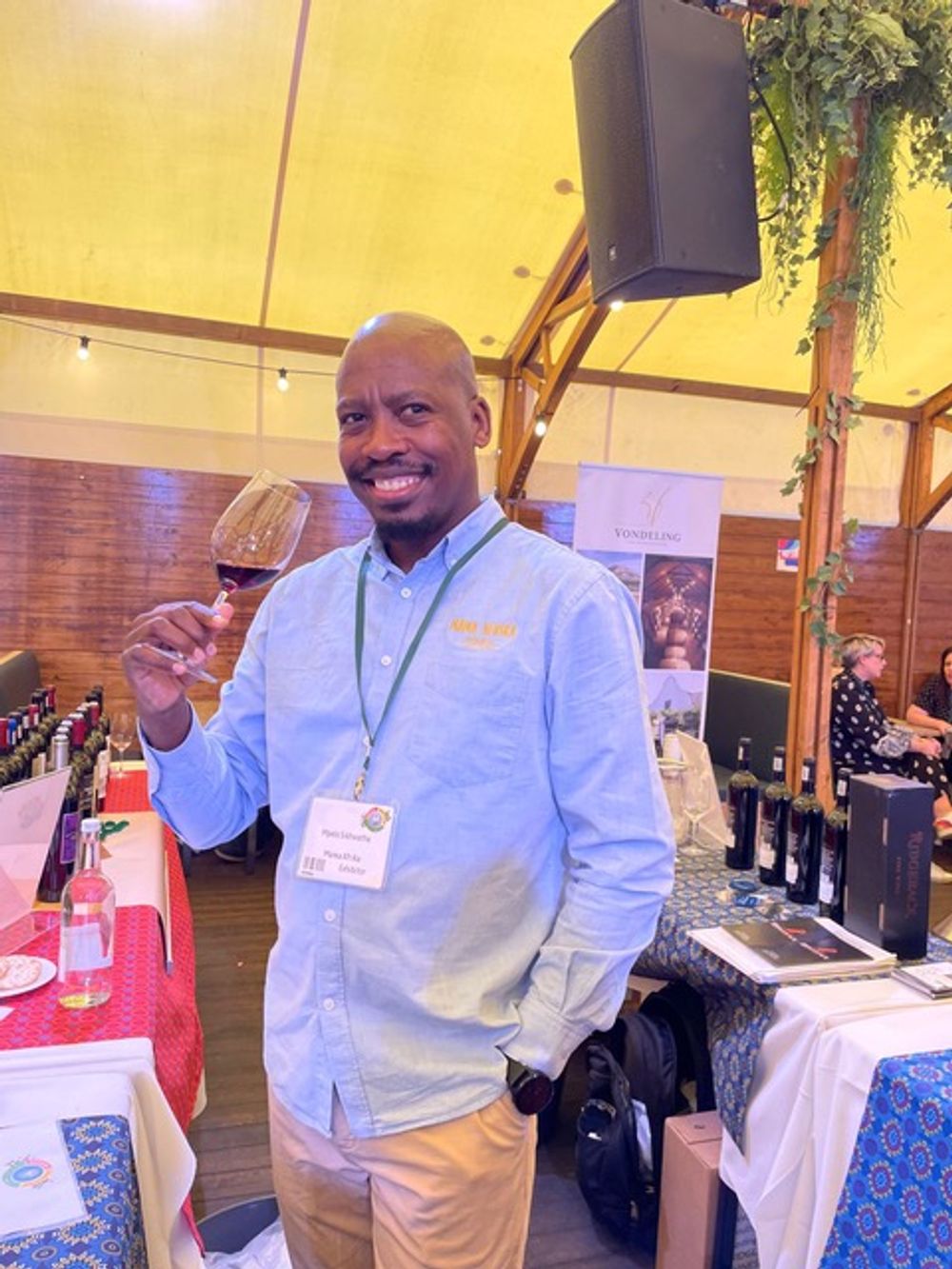
Mpelo from Mama Afrika Wines who presented his wines at the MJ Wine and WOSA events
Getting the mix right in the portfolio
The wines on show at the tasting reveal MJ Wine Cellars’ eclectic side. The portfolio is strong on the eastern Med with Moschopolis Winery from Greece and Zambartas and Vlassides from Cyprus; on central Europe, with Sebestyen Winery from Hungary and Famile Mantler from Austria, and some great South Africans (including black-owned Aslina Wines, Imvula Wines, Mama Afrika and M’Hudi) all quality producers showing some lovely wines.
However Janjo says these wines, which appeal very much to the geekier side of the trade, are the garnish: in the main, sommeliers still want to be able to show wines from more mainstream French regions that are familiar to customers and which do not require hand-selling.
But that presents its own challenges. All the good Burgundy, Bordeaux and even Rhône estates already have UK importers and distributors making it a real challenge to find good quality producers that reflect the core MJ Wine Cellars philosophy.
“If you were to ask me what is our USP I would have to say, importing from small, often family-owned producers who respect the environment and local traditions, and who make good idiosyncratic wines that reflect this. Sustainablity is absolutely key for us,” says sales support manager Drew Slowe, who worked at the Wine Society before joining Janjo and his team.
There’s some good stuff here from France in particular including Château Laulan from Côtes de Bordeaux, a tiny producer in conversion to organic, Domaine Guillot Gonin from Beaujolais, the Rhône’s historic Vignerons de Tavel et Lirac and from Alsace, Maison Charles Frey, offering a range of wines including the delicious, biodynamic Riesling Grand Cru Frankstein 2018 and the moriesh, balanced, fruit-packed Gewurztraminer Symbiose 2019.
But there are also some notable gaps. The only Italy producer is Abruzzo’s Azienda Vinicola Talamonti, the only Portuguese Cas’Amaro from the Lisbon region; there’s no Spain, no North America, no Australia or New Zealand, and no South America. The team plans to gradually plug these, visiting the US this month to sign at least one producer, whilst by year end, the portfolio will have a Chianti Classico range as well as three producers from Spain, including from Rioja and Rueda.
“For us it’s always a matter of keeping a careful balance between stock, cashflow and our long term plans for the business – particularly in today’s challenging environment and after the duty change. No one knows what the future holds but we must try our best to be prepared,” says Janjo.
Six of the Best
Here’s my 6 bottle case from the MJ Wine Cellars range.
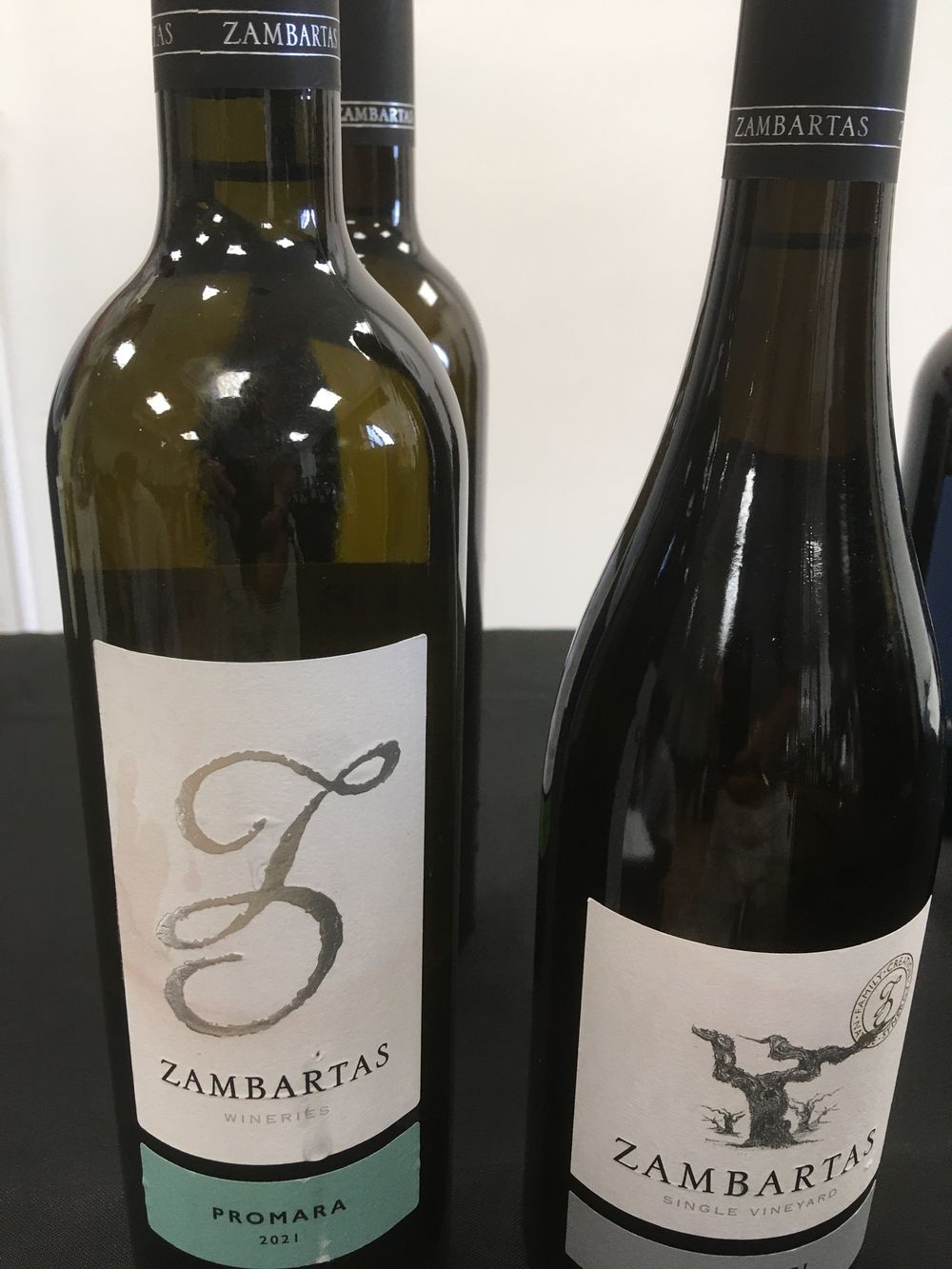
Zambartas Winery – Xynisteri single vineyard organic 2021
Marcos Zambartas joined his father Akis in 2008 at the family winery in Cyprus’s Troodos Mountains armed with an oenology degree from Adelaide University and the pair have transformed Zambartas winery into one of the most exciting on the island. Most of the focus is on indigenous varieties including rare Promara – an almost extinct white variety – red Yiannoudi and the island’s go-to white variety Xynisteri, which typically makes fresh, spritzy accessible wines suited to Cyprus’s warm climate. The Zambartas Estate Xynisteri was very decent but this single vineyard wine was exceptional, showing good fruit but also complexity and a great sense of place.
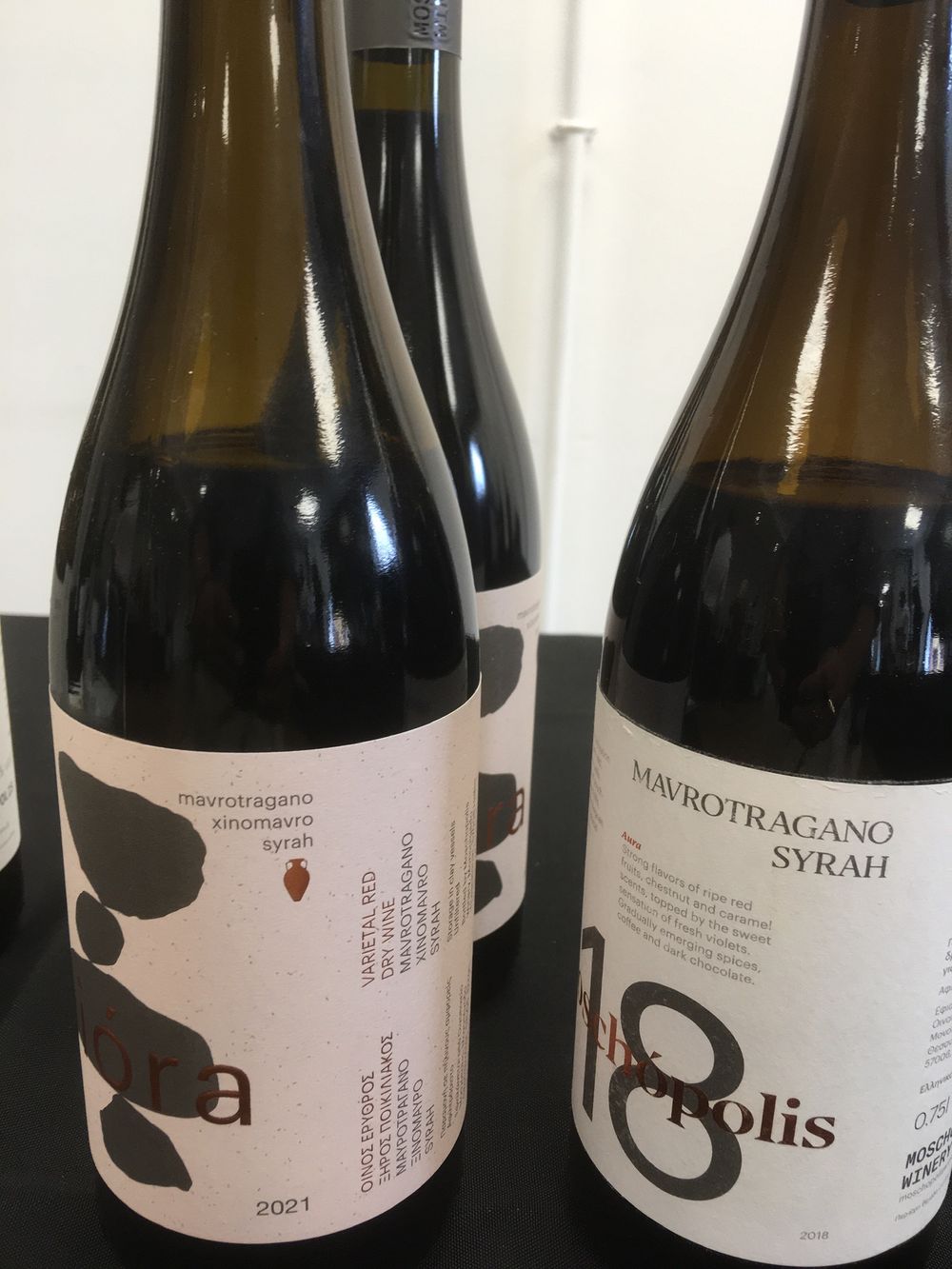
Moschopolis Winery – Assyrtiko 2018
The wine world has fallen in love with Assyrtiko, and production has moved far away from the variety’s natural home of Santorini, across Greece into Australia, Lebanon and elsewhere as producers respond to its popularity and weather-hardiness, crucial at this time of dramatic climate change. However, finding great examples made outside Santorini can be a challenge with the fresh saline complexity of good Santorini Assyrtiko often lacking elsewhere, particularly in often mundane examples from central Greece.
However, Moschopolis – a family-owned vineyard located 500m above sea level in Thessaloniki – shows it can be done, even though the winery is hundreds of miles from the Cyclades. I liked the Alora White 2021, an unusual but successful blend of Assyrtiko, Xinomavro and Malagousia (three of Greece’s best varieties) and 18, a red blend of Mavrotragano and Syrah (unfiltered after 18 months in oak) but the 2018 Assyrtiko steals your heart; six months in oak and great texture, almost certainly the best non-Santorini Assyrtiko I have tried.
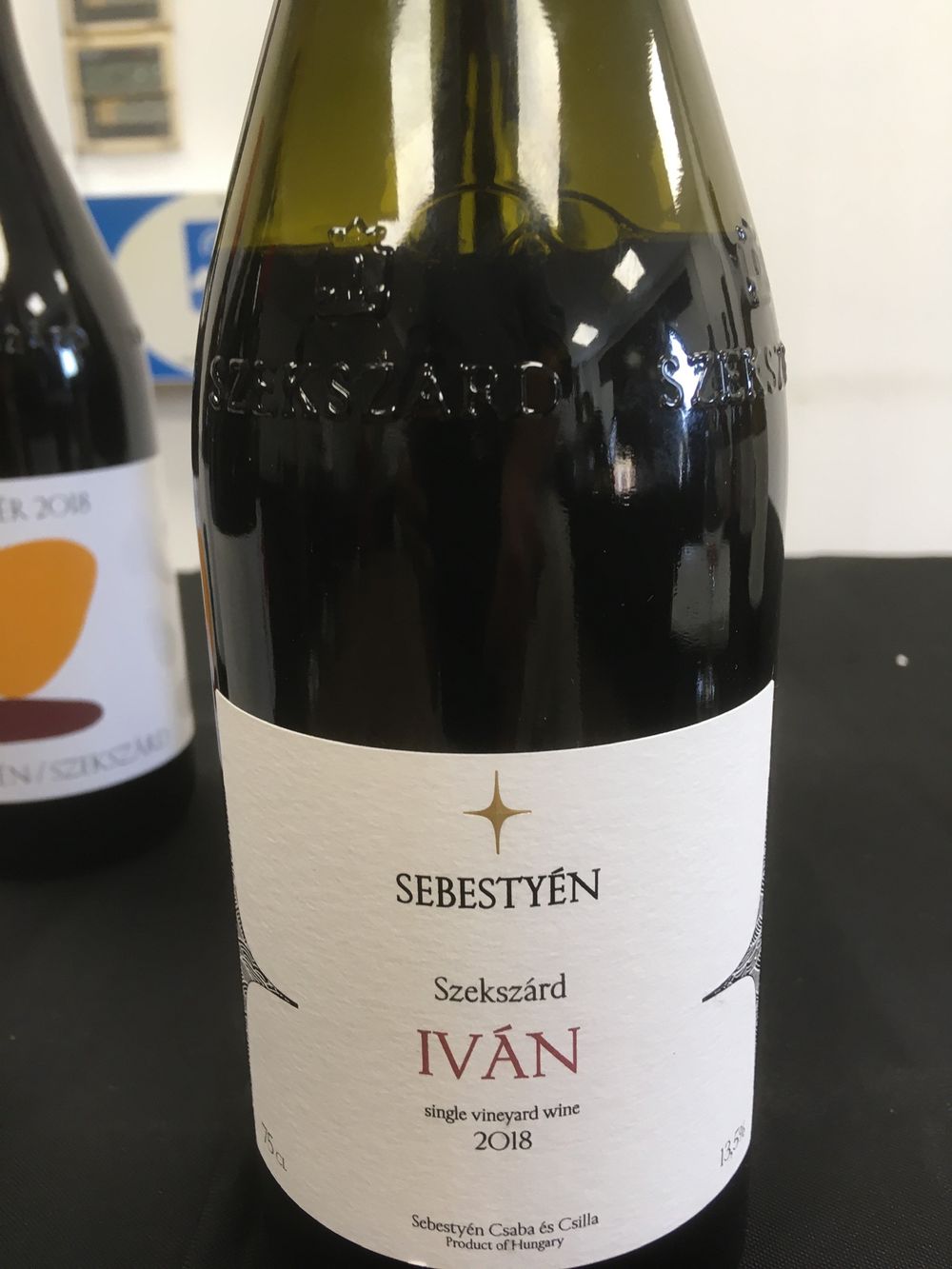
Sebestyén Winery – Ivan-Valley Bikaver 2018
This Bikaver from Szekszard is made by Hungarian siblings Csilla and Csaba Sebestyén and what a wonder it is, a full-on textured Bikaver blend of Kekfrankos, Merlot, Kadarka and Cabernet Sauvignon – Bull’s Blood as it should be. The pair make another Bikaver, a light and ethereal Kadarka 2019 (just 11.5%) and a white made from Cserszegi Fuszeres, an indigenous variety almost impossible for a non-Hungarian to pronounce, but showing great floral character, citrus and white flowers on the palate. Elegant wines from a great producer.
Familie Mantler – Blutenreich Zweigelt 2020
Three generations have run this family-owned business in Niederosterreich and today the winery makes a range of wines, including the Blutenreich range for MJ Wine Cellars (Blutenreich translates as Kingdom of Flowers, referencing the wild flowers growing between the vines). I liked the Mama 2022, a very limited edition skin contact Grüner, which showed great grip, acidity and character, whilst the Roter Veltliner was moreish and spritzy. But the Zweigelt 2020 is my choice – medium-bodied, juicy, fruit-forward and easy – good value too, at around £11 ex VAT.
Imvula – Imvula Methode Cap Classique NV
One day after this tasting at the huge WOSA event at Waterloo Bridge, I tasted a range of Cap Classique, many of them in the £40-50 range but this accomplished NV example is just at good, at a fraction of the price (£13.92 duty paid). This 100% black-owned company in Kwa Zulu Natal was set up by Siyabonga Mvula, a 33-year-old former assistant director at the Treasury in Jo-burg who resigned to follow his passion for wine. On the basis of this smooth, spritzy and moreish sparkler, he made the right decision.
Vignerons de Tavel et Lirac – Cuvée Royale AOC Tavel Rosé 2022.
Spicy, dark and brambly this Tavel rosé – produced by an historic association of winegrowers formed in 2018 with the merger of two winegrowing associations from Tavel and Lirac – may resemble Ribena but shows great fruit character, power and sense of place. The spiritual opposite of a light pink Provence rosé and all the better for it.
































